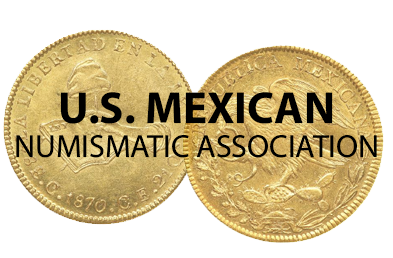Two centavos coins
Type 1 - Monogram
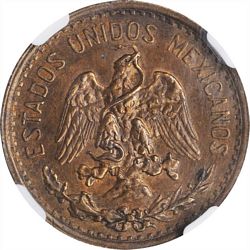
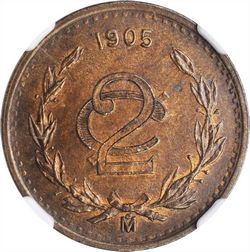
KM-419 1905 2c (Stack’s-Bowers NYINC auction, 21 January 2020, lot 23290)
With the Monetary Reform of 1905 a new range of coins, in the “Monogram”series, was introduced, with a uniformity with the 1c coin , that had been minted since 1899.
The first 2c coins were authorised by the decrees of 25 March and 5 April 1905. They had a composition of 95% copper, 4% tin and 1% zinc. a diameter of 25 mm, and weighed 6 g. Mintage was 50,000 in 1905 and 9,998,400 in 1906.
Five million pieces dated 1906 were minted at the Birmingham Mint in the United Kingdom. The coins continued to be minted in 1907 with the date of the previous year.
1906 coins are known with wide date, narrow date and an inverted 6.
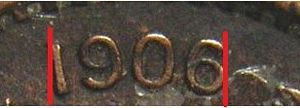
1906 narrow date
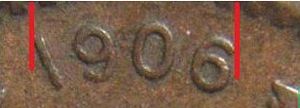
1906 wide date
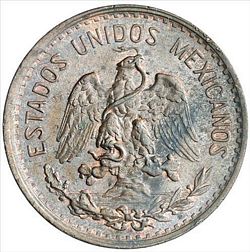
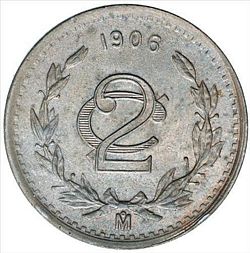
KM-419 1906 2c inverted 6 (Stack’s Bowers auction, 13 December 2006, lot 842)
Type 2 - Zapatista
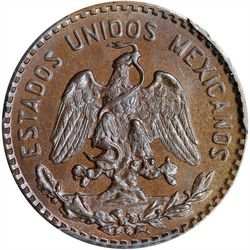
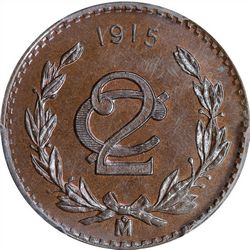
KM-420 1915 2c (Stack’s-Bowers NYINC auction, 15 November 2022, lot 72870)
In 1915 the Zapatista struck 486,980 reduced size coins at the Mexico City mint. These had a composition of 95% copper, 2.5% tin and 2.5% zinc, a diameter of 20 mm and weighed 3 g.
These were authorised by a decree of 29 June 1915 but a few months later, in August 1915, General Alvaro Obregón took Mexico City and drove out the Zapatista forces. The coins were declared illegal on 19 October 1916. and they may have only circulated in July 1915.
Type 3 - Monogram
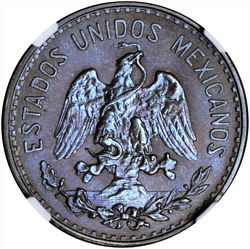
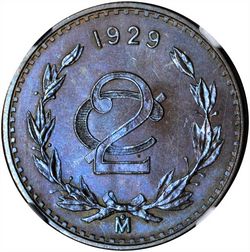
KM-419 1929 2c (Stack’s-Bowers ANA auction, 4 August 2017, lot 21276)
The third type of 2c coins, back to normal size, again had a composition of 95% copper, 2.5% tin and 2.5% zinc and weighed 6 g. Mintage was
| Year | Mintage | |
| 1920 | 1,325,000 | |
| 1921 | 4,275,000 | |
| 1922 | a few released into circulation | |
| 1924 | 750,000 | low mintage |
| 1925 | 3,650,000 | |
| 1926 | 4,750,000 | known with large 6 over small 6 |
| 1927 | 7,250,000 | |
| 1928 | 3,250,000 | |
| 1929 | 250,000 | low mintage |
| 1935 | 1,250,000 | |
| 1939 | 5,000,000 | |
| 1941 | 3,550,000 |
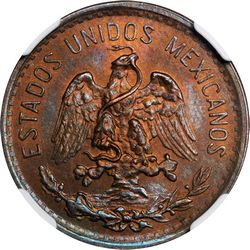
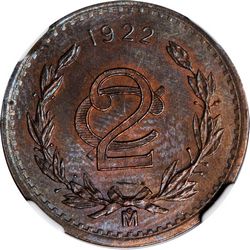
KM-419 1922 2c (Stack’s-Bowers Baltimore auction, November 2014, lot 678)
1922 is a seldom encountered key date. “It seems most likely that the mint produced the dies and struck some coins intended for circulation, but never received the order from the Federal Reserve to introduce into circulation. The few pieces that were introduced into circulation endured a lot of wear and are usually found in low grade with corrosion. This example is the finest certified by either NGC or PCGS.”
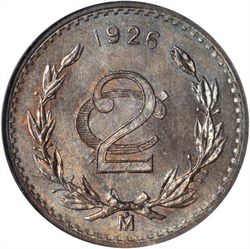
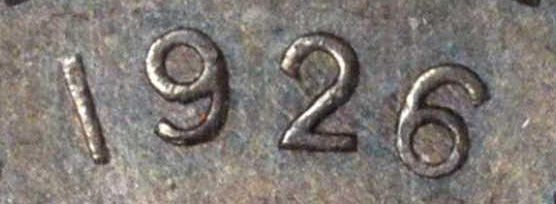
KM-419 1926 2c (Stack’s-Bowers ANA auction, 15 August 2016, lot 22762)
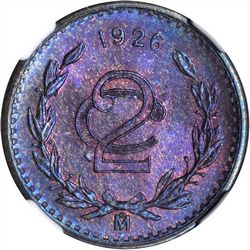
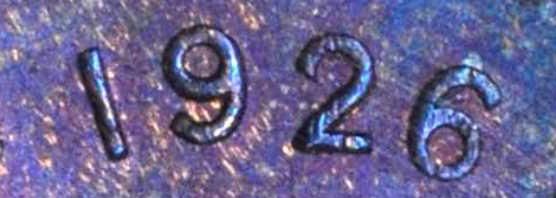
KM-419 1926 2c recut date (Stack’s-Bowers ANA auction, 7 August 2017, lot 22975)
he minting of these coins was suspended on 29 December 1942Diario Oficial, 31 December 1942. They were demoneterised on 31 December 1943.
